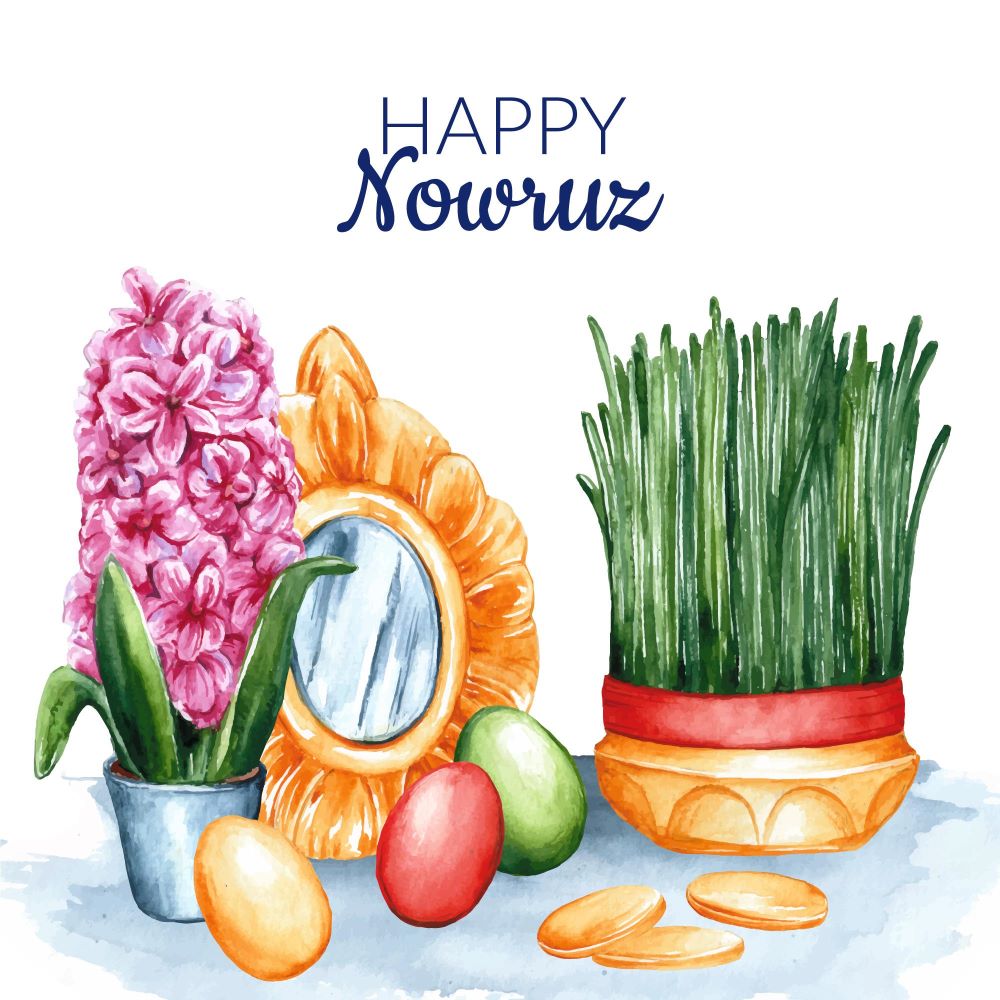The International Festival of Nowruz
Nowruz is a moment when individuals hope for prosperity and fresh starts. A significant tradition observed during this period is the assembling around the 'Haft-sin Table,' adorned with items representing purity, brightness, abundance, and prosperity. Amidst significant challenges, Nowruz encourages dialogue, good relations, and reconciliation.
Inscribed on the Representative List of the Intangible Cultural Heritage of Humanity in 2009, Nowruz is a cherished cultural tradition symbolizing the rejuvenation of nature and promoting values of peace, solidarity, and reconciliation among generations and within families. Celebrating Nowruz signifies a commitment to living in harmony with nature and maintaining a caring and respectful attitude towards the sources of life in nature. This internationally celebrated day, spelled and pronounced differently in various countries, signifies the arrival of spring on the astronomical vernal equinox, typically March 21st. Nowruz marks the beginning of the new year for over 300 million people worldwide and has been observed for more than 3,000 years in regions including the Balkans, the Black Sea Basin, the Caucasus, Central Asia, the Middle East, and among Iranian communities globally.
Nowruz Ceremony
Amu Nowruz and Haji Firuz, the traditional figures heralding the Nowruz festival in Iran, emerge onto the streets to commemorate the Nowruz festival starting with Charshanbe Suri and ending with Sizdah Bedar.
Night of Charshanbe Suri
During Chaharshanbe Suri night, a precursor to the New Year celebrated on the eve of the last Wednesday before Nowruz, Iranians leap over fires while reciting the poetic line "my yellowish is yours, your reddish is mine," symbolizing a desire to cast away illness and receive warmth, health, and energy in return. Additionally, nuts and berries are commonly served during the celebration. Another tradition observed on the eve of Chaharshanbe Suri is "spoon banging," reminiscent of the Halloween custom of trick-or-treating.
Sizdah Bedar
Nowruz holidays in Iran span thirteen days. On the thirteenth day, known as Sizdah Bedar, Iranians go to parks or out of the city for picnics and to connect with nature. As part of the ceremony, the greenery used in the Haft-sin setting is disposed of, often in flowing water. It is a tradition, especially among young single individuals, to tie the leaves of the greenery before discarding them, symbolizing a wish to find a partner. Additionally, Sizdah Bedar is marked by playful pranks and jokes, reminiscent of April Fools' Day.
Special Customs of Nowruz
Cleaning and Shopping
Preparing for Nowruz typically involves two main tasks: house cleaning and shopping. Prior to the arrival of Nowruz, people engage in a thorough spring cleaning of their homes, ensuring everything is fresh and tidy for the New Year. Additionally, individuals purchase new clothes to wear during the celebrations and buy flowers, with hyacinths and tulips being popular choices for the traditional Haft-sin setting.
Visiting Family and Friends
Throughout the Nowruz holidays, it is customary for people to make visits to the homes of family, friends, and neighbors. Usually, younger individuals initiate visits to their elders, who reciprocate later. Guests are welcomed with tea, pastries, cookies, fresh and dried fruits, mixed nuts, or other snacks. To bridge the gap caused by long distances between friends and family, many Iranians opt to host grand Nowruz parties.
Food Preparation
One of the common traditional dishes prepared for Nowruz festivities is dill rice with fish, a popular choice for the Eid night meal, while sweets like Nan-e Nokhodchi are enjoyed as well. Cooking special foods for Nowruz is a widespread practice across regions where the holiday is celebrated, each area boasting its unique culinary traditions and sweet treats. Another traditional Nowruz special food made from wheat germ is Samanu. This food is commonly cooked in most countries that observe Nowruz, with some regions having specific rituals associated with its preparation. In various parts of Iran, Afghanistan, Tajikistan, Turkmenistan, and Uzbekistan, women and girls gather to cook Samanu together, often during nighttime hours, accompanied by songs and chants.
Haft-sin
Traditionally, prior to Nowruz, families gather around the Haft-sin table, eagerly awaiting the exact moment of the March equinox to usher in the New Year. The number 7 and the letter S hold significance, representing the seven Amesha Spentas from the Zend-Avesta, which correspond to the elements of Fire, Earth, Air, Water, and the life forms of Humans, Animals, and Plants. In modern interpretation, the Haft-sin items are simplified to: Sabze; sprouts of wheat, barley, mung beans, or lentils grown in a dish, Samanu; a sweet pudding made from wheat germ, Oleaster; (senjed in Farsi), Vinegar; (serke in Farsi), Apple; (sib in Farsi), Garlic; (sir in Farsi), Sumac; (somāq in Farsi).

The Haft-sin table may also feature a mirror, candles, painted eggs, a bowl of water, goldfish, coins, hyacinth, and traditional sweets. Additionally, a "book of wisdom" such as the Quran, the Šāhnāme of Ferdowsi, or the divān of Hafez may be displayed alongside.
In 2010, the United Nations General Assembly proclaimed International Nowruz Day through resolution A/RES/64/253. This significant step was initiated by several countries that share this cultural holiday. Under the agenda item of 'culture of peace,' member states such as Afghanistan, Azerbaijan, Albania, Iran, India, Kazakhstan, Kyrgyzstan, Tajikistan, Turkey, and Turkmenistan jointly introduced a draft resolution (A/64/L.30) titled 'International Day of Nowruz' during the 64th session of the General Assembly for its consideration and adoption.
To contact the Kalber dairy export department, refer to the contact section.

-min.webp)
 (2).webp)
.webp)
.webp)